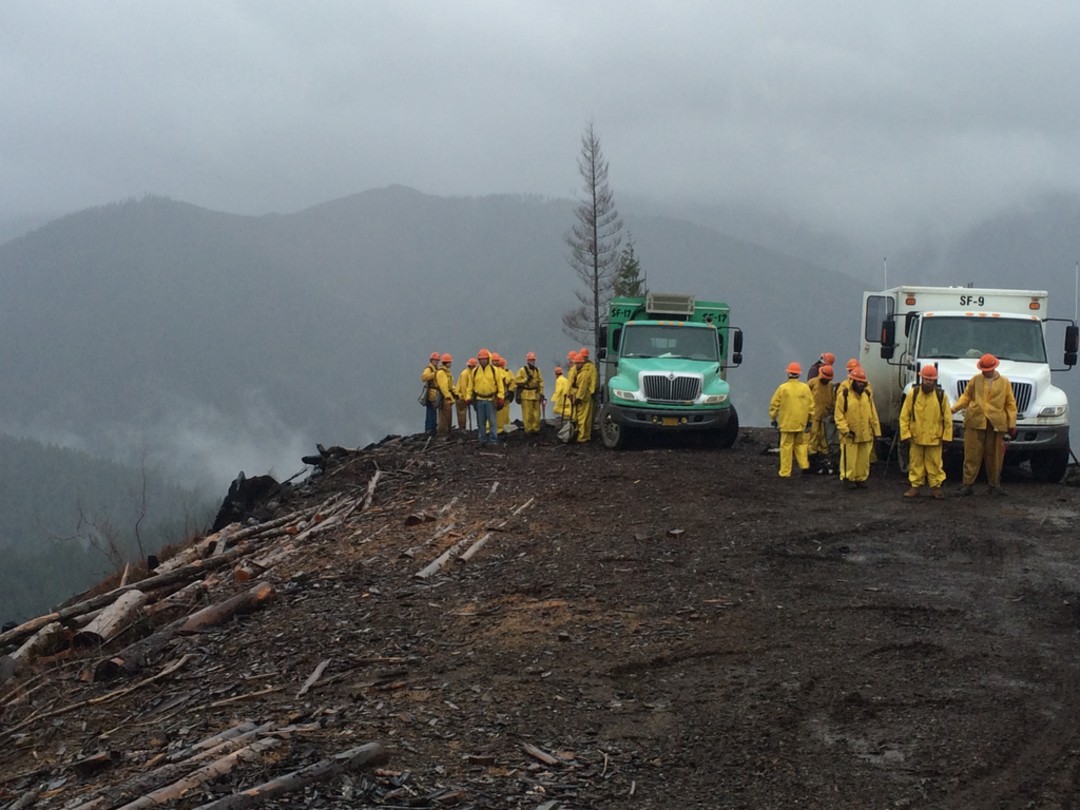Why Are Inmates Planting Trees in Tillamook Forest?

Image: Nathan Seable
“Most people have no idea that there’s a 200-bed prison work camp right in the middle of the Tillamook Forest,” says Nathan Seable. He’s the camp manager at South Fork Forest Camp, a minimum security facility that turns a pre-screened group of low-risk inmates into a productive work force.
Inmates, who can earn small wages based on an incentive system maintained by crew leaders, can apply to be assigned at South Fork but must have no history of escaping or arson crimes or arrests, and must possess good physical/mental health.
“We have not had problems keeping the camp full,” says Seable. “There are always inmates who realize that at SFCC they have a opportunity to get outside, learn useful skills, and do work.”
And work they do: this year, South Fork Camp inmates will plant 350,000 trees in the Tillamook Forest—close to a third of the total reforestation planting the forest will see in 2015.
SFFC is a collaborative effort between the Oregon Department of Forestry and the Department of Corrections and the camp has to balance production with security in order to satisfy both government agencies.
“It’s a partnership in action,” says Tony Andersen of the ODF. “At a time when public confidence in government is decreasing, South Fork Camp is a good example of two different government agencies successfully coming together.”
South Fork Camp was the state’s first prison work camp, opening in 1951 in order to help the land recover from the devastating “Tillamook Burn” fires of the early 1930s which destroyed 250,000 acres of state forest. The camp’s two original purposes dealt with fire recovery: reforestation and wildfire suppression. Prison work programs became more common in Oregon after the 1994 passing of Measure 17, known as the Prison Reform and Inmate Work Act.
No inmate is guaranteed the right to a job or wage, but inmate labor programs operate on the philosophy that, as the state constitution puts it, “Inmates who are confined in corrections institutions should work as hard as the taxpayers who provide for their upkeep.”
Firefighting is still a priority at South Fork Camp, with crews ready to respond to both local and statewide fires as needed. Inmates go through a two-week long firefighting training and Seable says the camp has all the necessary gear so they’re “ready to go mobile with up to 150 inmates” when statewide deployments occur.
Over time, the camp has picked up new tasks such as trail building and maintenance, wildlife rehabilitation, and campground maintenance. South Fork inmate labor plays a particularly big role in maintaining trails, campgrounds, and day-use areas, acting as the backbone for the area’s recreation management.
“I like to remind the guys that the work they do here is real,” Seable says. “Yes, they are incarcerated. But once they get out they can bring family and friends to the woods and say ‘see that tree there? I planted it,’ or ‘see that trail? I made it.’ They are doing work here that matters.”
| South Fork Forest Camp by The Numbers | |
|---|---|
| Daily cost to run a field crew | $730 per crew |
| Inmates as of 9/2014 | 125 |
| Staff (DOC - ODF) | 56 |
| Miles of trails built & maintained each year | up to 105 |
| Acres of young tree stands treated each year | 10,000 |
| Local fire deployments last year | 27 |
| Statewide fire deployments last year | 11 |
